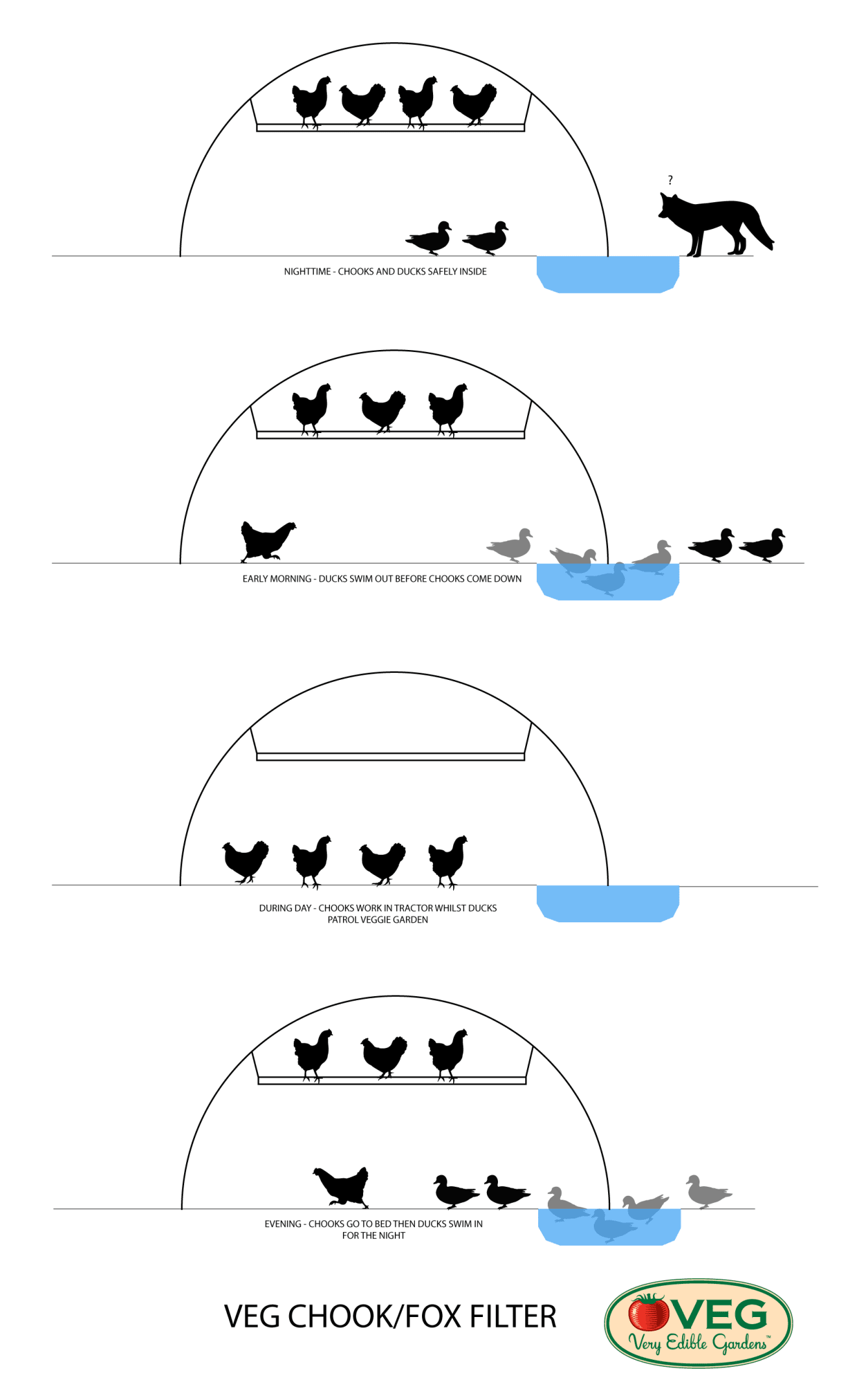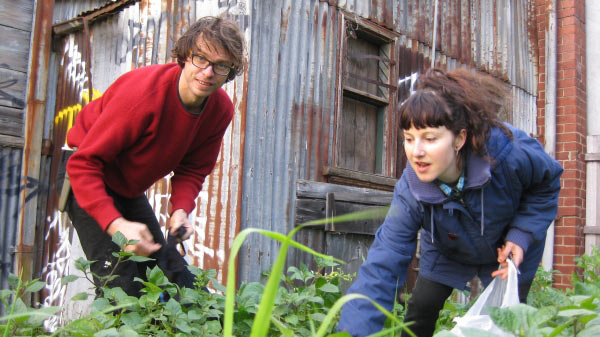When designing edible gardens, a site-specific problem will often crop up. One of the most enjoyable aspects of permaculture design for us is devising site-specific solutions to those problems. In this short series we give four examples, all bona fide VEG originals, with a new one each month for the next four months.
Part One – the Chook/Fox Filter
The Site-Specific Design Problem
In 2005 Dan from VEG lived in a Melbourne sharehouse with abundant veggie gardens, a Woodrow-style chook tractor and several chooks, as shown bottom right below. Another chook tractor is shown in the next photo to give a better idea of what the thing looked like – a lightweight moveable bottomless chook pen.


As will happen, some slugs and snails soon found out about our gardens, told their friends, and started partying hard. We were manually removing those we saw, when one day we read this statement from Mr Bill Mollison: “You don’t have a slug problem, you have a duck deficiency.” We didn’t need telling twice, and the next day Dan bought two beautiful ducks home on the train. Khaki Campbell was the breed, known to be partial to a slug or three.
Now this is when the real design challenge began. Snails and slugs were no longer a problem. Every day we enjoyed watching proteinaceous slugs and snails being converted into delicious eggs in front of our eyes. But, as foxes were rife, each evening we would manually pick up the ducks and put them in the chook tractor to sleep with the chooks. The next morning we would then manually lift the ducks out of the chook tractor and place them in the vegie garden where they could do what they do best. This got to be a pain in the bum, and we wanted to know if we could eliminate it, such that we could sleep in if we wanted to and stay out late without having to worry.
The Site-Specific Design Solution
We were using an old plastic kiddies pond for the ducks to frolic in.

While pondering the pond the realisation dawned. If we located this pond such that the water level was about the same as the ground level, and such that half the pond was inside the chook tractor and half outside, our problem was solved. After dark, and well after the chooks had gone to bed on the roosts in the chook tractor, the ducks would jump in the pond, dive underneath the edge of the chook tractor, and climb out to sleep underneath the chooks. Come the first rays of sunlight, well before the chooks woke up and came downstairs to work, the ducks would go through the pond in the reverse direction to spend the day plucking plump slugs out of our cabbages and lettuces. What we had created was a kind of filter that prevented chooks and foxes from passing either way whilst giving ducks free access both ways.

Note: Like many new systems we had a few bugs that needed tweaking. The main one was the first full moon. The moonlight was so bright the ducks thought it daytime and swam out into the garden! Not ideal, so from then on we put a piece of wood over the outside bit of the pond when the moon was full.



